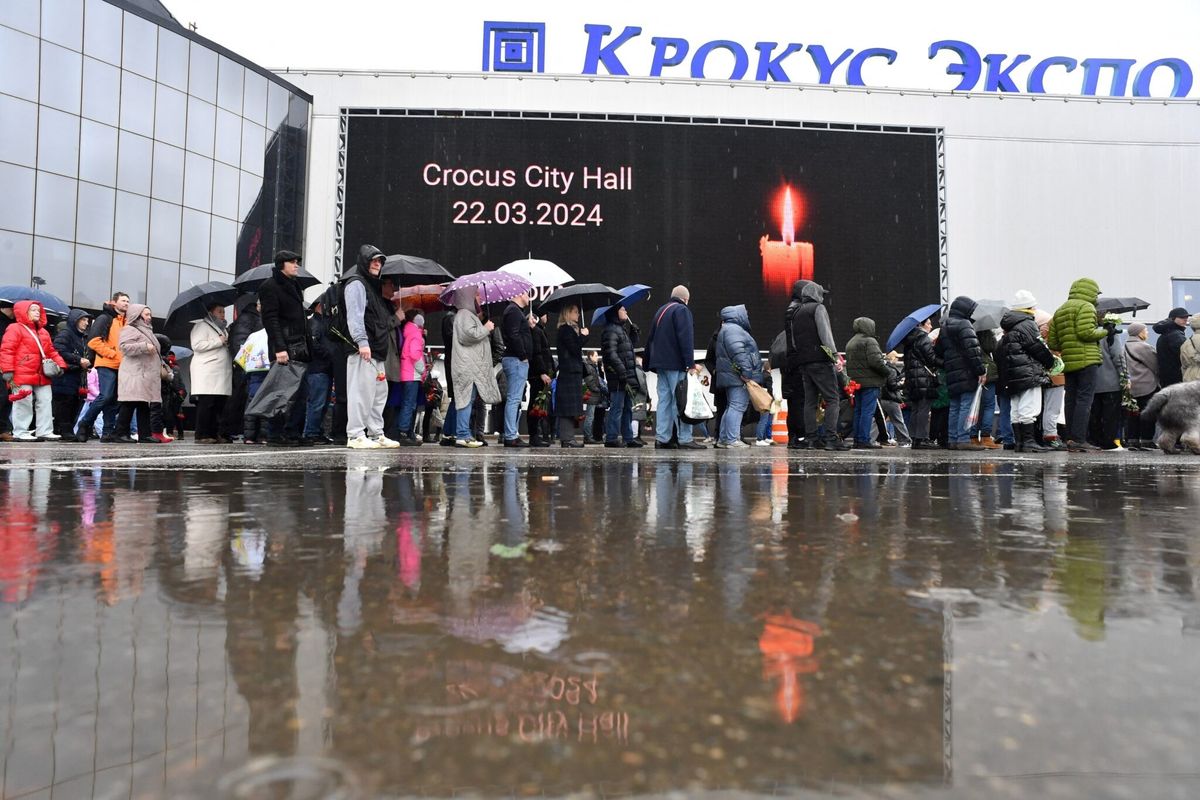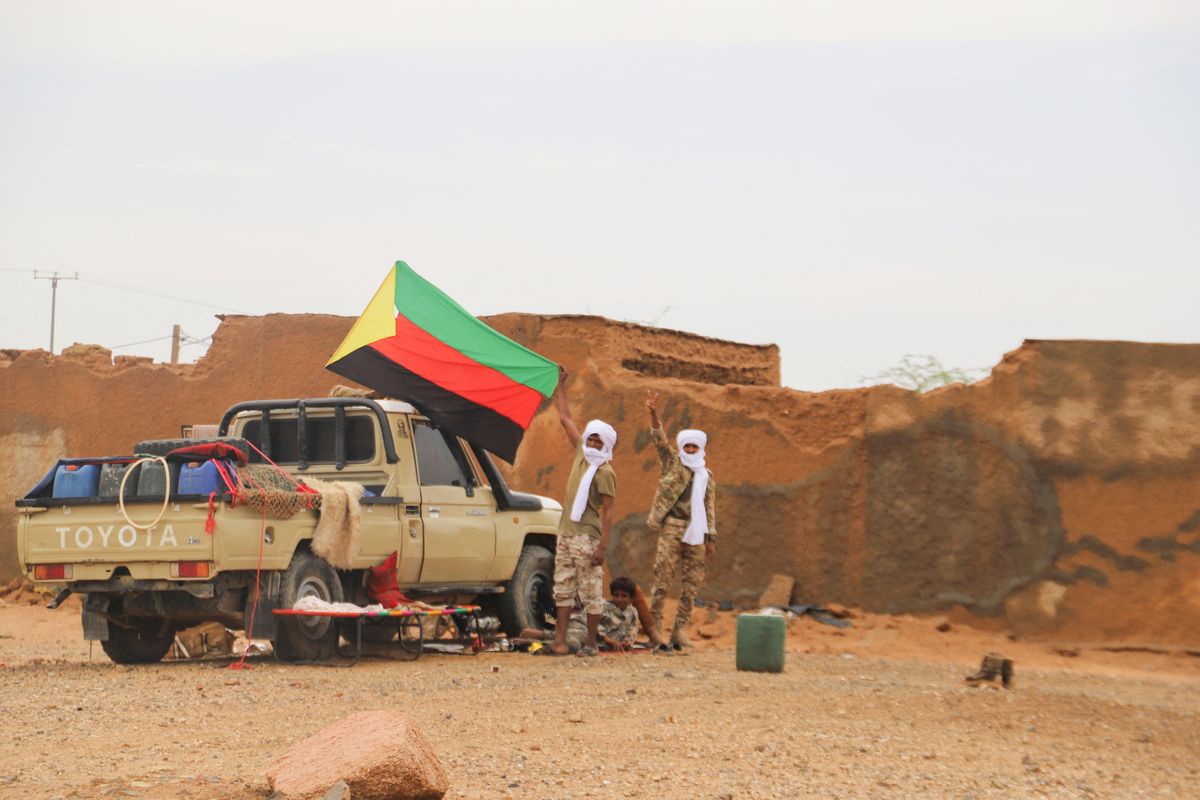A key moment on the Boko Haram timeline occurred in March 2015, when the group pledged allegiance to the Islamic State (ISIS). According to Dr. Raymond Gilpin, Dean of Academic Affairs for the Africa Center for Strategic Studies at National Defense University, both groups felt that they “could gain from the publicity” of the announcement. Since then, Boko Haram seems to have strengthened its ties to ISIS, as the group’s “sub-regional ambitions intensified after the pledge,” explains Gilpin. Further, ISIS’ appointment of a new Boko Haram leader “suggests that they might have plans to consolidate their outreach in this part of the world,” Gilpin said in an interview with The Cipher Brief.
The Cipher Brief: How has Boko Haram evolved since it pledged allegiance to ISIS in March 2015? Has it changed how the U.S. and Nigeria address the threat?
Raymond Gilpin: Boko Haram leader Abubakar Shekau’s March 2015 pledge of allegiance to the so-called Islamic State left many analysts scratching their heads. While Boko Haram had clearly been emulating ISIS’ capture-and-hold tactics for months, it was also fairly evident that material support from ISIS and formal collaboration were unlikely.
Both Boko Haram and ISIS were suffering reversals on the battle field in early 2015, and both parties felt they could gain from the publicity. ISIS needed to project the notion of an expanding global caliphate that is firmly under their control, while Boko Haram was struggling to burnish its credentials beyond Nigeria. The ISIS brand bestowed a semblance of organized lethality on Boko Haram, who probably expected financial support and an influx of fighters from ISIS. By accepting the Boko Haram pledge, ISIS made notional territorial ‘gains’ but also inherited an ideologically fractured group, whose penchant for indiscriminate attacks, scorched earth tactics, and the use of young girls in combat even they found distasteful. In summary, the pledge might have been a symbolic act of desperation, rather than a harbinger of effective collaboration.
The main change in the months following the pledge has been the lethality of Boko Haram. The group was responsible for the deaths of more innocent civilians in the ensuing year than occurred in the preceding five years, earning them the dubious distinction of being the world’s deadliest terrorist group in 2015 by the Global Terrorism Index. The progressively increasing lethality also had a number of unintended consequences for Boko Haram. For example, the scorched-earth policy emptied towns and villages of their inhabitants and deprived Boko Haram commanders and soldiers of plunder and enslaved labor on which they depended. Also, the extreme nature of their atrocities (including the use of pre-teen girls as suicide bombers) caused revulsion and further rifts within their ranks. This apparently sparked leadership challenges and renegade factions.
The link with ISIS also led to an intense theological debate regarding the validity of targeting moderate Muslims. Shekau expounded that all true Muslims should participate in jihad, but other Boko Haram leaders disagreed. These developments deepened the fissures within Boko Haram and weakened the group, progressively. The pledge to ISIS made Boko Haram more indiscriminate and deadly, but it sowed the seeds for discord and fragmentation.
Affiliation with ISIS raised red flags in Abuja and Washington DC. Both capitals reaffirmed their respective commitments to defeat Boko Haram on the battlefield and devoted significant resources to do so. The tactics did not change, necessarily. What changed was the sense of urgency. Unfortunately, the desire to attain a quick military victory put a number of other important interventions on the back-burner. These include: addressing challenges faced by a tsunami of refugees; restoring law and order to affected communities; investing in basic services and infrastructure; and fostering inclusive economic opportunities.
TCB: What do you make of the recent change in Boko Haram’s leadership from Abubakar Shekau to Abu Musab al-Barnawi?
RG: It is unclear whether there has been an effective change in leadership. There appears to have been a split, with Abubakar Shekau now referring to his faction by the group’s original name, “Group of the People of Sunnah for Preaching and Jihad,” and Abu Musab al-Barnawi using the post-March 2015 moniker, “Islamic State West Africa Province.”
Boko Haram lost territory and credibility in the international jihadist community under Shekau’s leadership. These are two things that matter to ISIS. The perception of a devalued brand forced ISIS to orchestrate a leadership change. It is quite curious that ISIS opted for a leadership change, rather than a severance. This suggests that they might have plans to consolidate their outreach in this part of the world.
In choosing al-Barnawi, they opted for youth (he is reputed to be under 30 years old), name recognition (his late father, Mohammed Yusuf, founded Boko Haram), and ideological alignment (he is a fundamentalist Sunni). He is also a more politically-savvy and unifying figure than Shekau. However, to be successful, al-Barnawi will need financial support and additional fighters. There have been suggestions that ISIS might start redirecting potential jihadists to the Lake Chad Basin region, under the new Boko Haram leadership.
Shekau remains a formidable player. He has railed against foreign involvement in Northern Nigeria and could portray al-Barnawi as a lackey of outsiders. His forces may have been decimated (by battlefield losses as well as a lack of sustenance), but he still commands significant numbers. Most likely, this split might pit these two dominant Boko Haram factions against each other.
Last week’s release of a video showing some of the 276 schoolgirls abducted by the group in 2014 highlights ways in which the split could complicate an already tenuous situation. Those negotiating a release of the girls might have some difficulty identifying credible interlocutors, since it is unclear exactly which faction is holding how many girls. Diplomacy is further complicated by the need to address two sets of demands and positions. Intelligence data on location, force strength, and territory will also have to be revised.
TCB: Boko Haram operates across Nigeria, Cameroon, Chad, and Niger. What is the level of cooperation and coordination between these countries to defeat Boko Haram?
RG: Boko Haram’s sub-regional ambitions intensified after the pledge to ISIS, with their forces embarking on cross-border raids in neighboring countries. This spurred Cameroon, Chad, and Niger to join forces with their Nigerian counterparts to confront Boko Haram, within the context of an African Union-sanctioned Multi National Joint Task Force (MNJTF). While the desired end state (namely the defeat and dismantling of Boko Haram) is fairly consistent, the modalities remain a significant challenge. The MNJTF is inadequately resourced. Only $250 million of the $700 million budget for the proposed 8,700 person regional force has been pledged, and even less has been disbursed. The slump in oil prices has also affected operations and deployment from Nigeria (which accounts for almost half of the pledged amount) and Chad.
Also, while there are expressions of commitment at the highest political level in all four countries, coordination is much more difficult in practice. Some countries are becoming distracted by domestic issues. For example, Nigeria is having to redirect some of its attention to the increasingly unstable Delta region in the Southern part of the country, while Chad was occupied with presidential elections in April 2016. There has also been disquiet in some quarters that Chad might be using this crisis as an opportunity to cement its status as the region’s leading counter-terrorism provider. Cohesion, cooperation and coordination are challenged by these issues.
TCB: What role do African Union forces play in battling Boko Haram?
RG: The MNJTF could be considered an African Union force to the extent that it was authorized by the AU in January 2015. In practice, there are no clear coordinating mechanisms in place, and troops from each of the four contributing countries continue to follow their national chains of command and use equipment and systems that may not be interoperable. In this case, we have something akin to a loose coalition of the willing that is recognized by the African Union. This explains a lot of the coordination challenges and strategic disconnects that have occurred.
In spite of the challenges, MNJTF troops have made significant progress wresting control of territory from Boko Haram, destroying their bases and containing the movement of forces and materiel in the Lake Chad Basin region. Unfortunately, warfighting alone will not defeat the scourge of Boko Haram. There is an urgent need for forces that are more agile and adaptable. They should be capable of defeating the enemy, protecting civilians, and actively supporting responses to humanitarian crises. This requires a lot more resources and training than the MNJTF currently has. It requires a strategy that clearly outlines immediate and longer-term goals.
Also worrisome is the fact that the MNJTF might be able to initially clear areas of Boko Haram fighters, but they lack the resources to keep these areas Boko Haram-free. National governments are expected to provide forces to secure liberated areas, but because this does not always happen, displaced communities do not feel safe to return.
TCB: What more can be done by the U.S. and Nigeria to counter the Boko Haram threat?
RG: Approaches to violent extremist groups, like Boko Haram, have ranged from what some describe as “decapitation” (targeting and eliminating the leadership) to “deradicalization” (a range of socio-economic interventions to deter recruitment and deployment). Both have been tried in the Lake Chad Basin region with mixed results. If the threat of Boko Haram and its offshoots is to be diminished and defeated, Nigerian authorities and their external partners should strive for a more balanced and coordinated strategy. Responding to attacks will hardly suffice. Resources and attention should be equally directed to improving governance, accountability, opportunity, and inclusion.
The United States and Nigeria should keep the spotlight and pressure on Boko Haram. The fragmentation of the group provides an opportunity to press the military advantage and bolster affected communities. Political and religious leaders in Northern Nigeria should be engaged and made part of the solution. The genesis and longevity of Boko Haram could be traced to governance failures in Northern Nigeria, as well as in the Federal capital, Abuja. Meaningful governance reform and tangible steps to increase accountability are vital to success against Boko Haram. Muscular diplomacy could help move this forward.
Plans for a law enforcement surge in Northern Nigeria should be expedited and adequately resourced. Territory retaken from Boko Haram would only stabilize if the local communities have some confidence that the rule of law would be established and maintained. Deploying and sustaining trained police who would work with local community leaders is key. This will create the conditions for lasting progress.
Some attention should be paid to addressing the root causes of radicalization, particularly among young people. Government and civil society programs to promote economic opportunity and inclusion would provide hope and help build trust. Civil-military coordination cells could help facilitate information flows, build trust, and lay the foundation for a balanced (not exclusively military) approach to resolving this crisis.
Addressing the plight of the many thousand internally-displaced people will help stabilize communities and reduce the likelihood of recruitment by violent extremist groups. Both the U.S. and Nigerian governments should increase the amount of humanitarian assistance available to those affected by this crisis.
Barrett Browne, Acadeic Associate with the Africa Center for Strategic Studies at NDU, provided research support.












